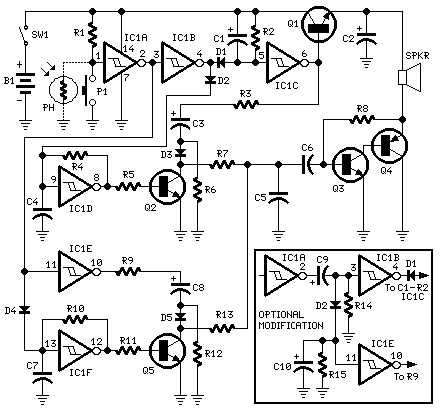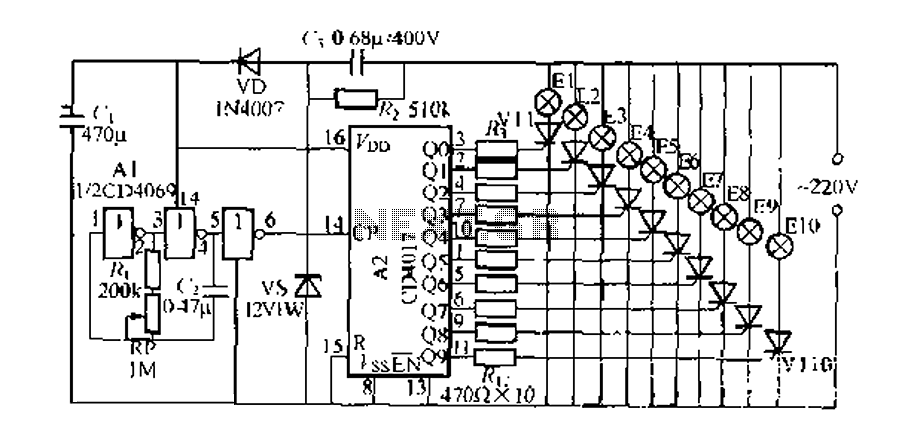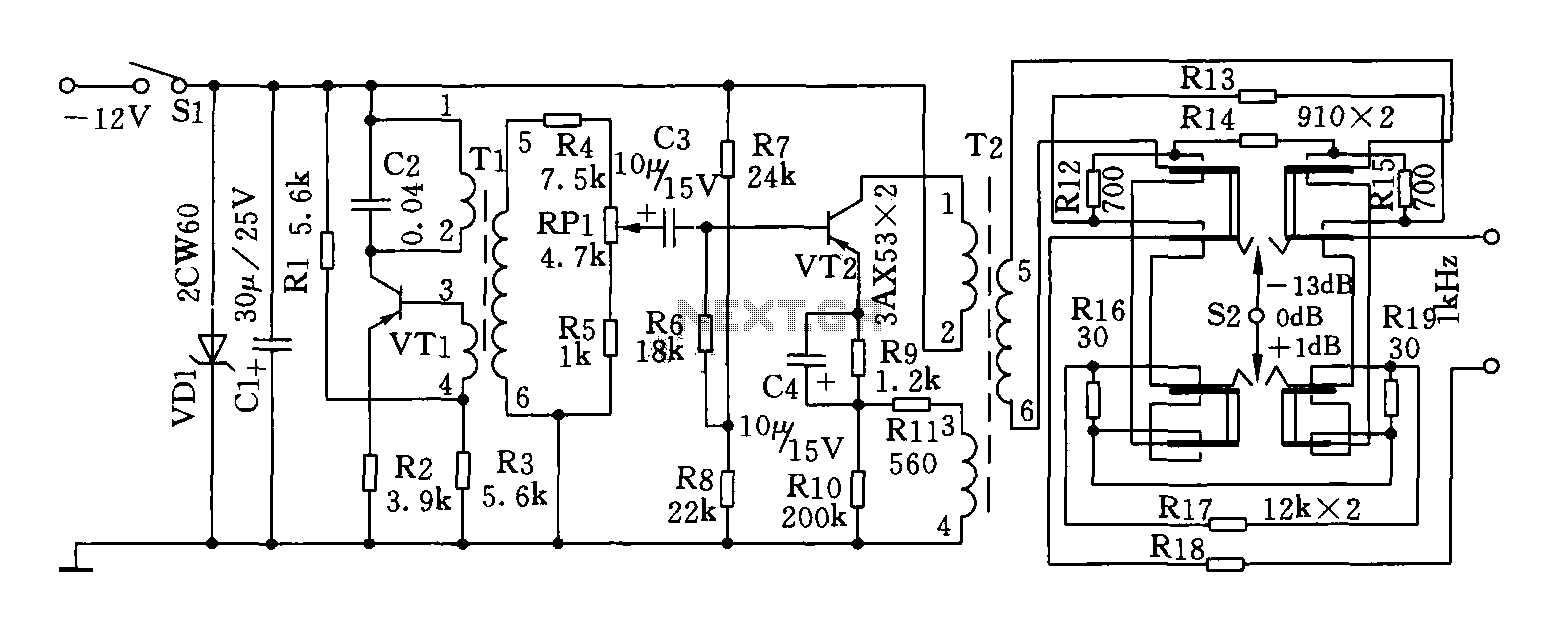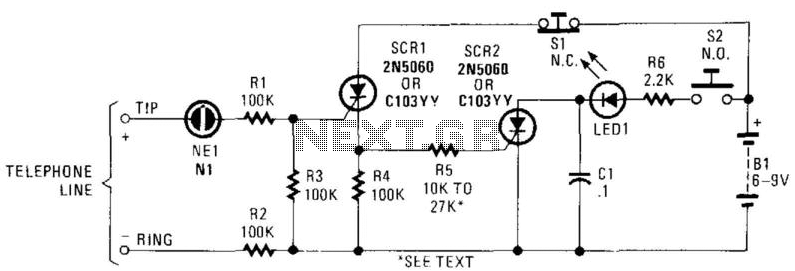
Bells ring Generator

Three circuit options Can be synchronized to Christmas tree flashing lights This circuit generates a dual-tone bells ringing similar to most door-bell units. It can be used in many applications other than door-bell. In the Notes below several options will be given in order to suit different needs. More: The circuit as shown in the diagram generates a "Ding-tone" when P1 is pressed and a "Dong-tone" when P1 is released. IC1D is the first-tone frequency generator and IC1F generates the second-tone. Q2, Q5 and related components act as
The circuit described is a versatile dual-tone generator that can be utilized in various applications, including doorbells and decorative lighting systems such as synchronized Christmas tree lights. The primary function of this circuit is to produce two distinct tones: a "Ding" sound when the push button P1 is pressed and a "Dong" sound when the button is released.
The circuit employs integrated circuits (ICs) to generate these tones. Specifically, IC1D functions as the first-tone frequency generator, producing the "Ding" sound. This IC is typically configured as an astable multivibrator, which oscillates at a frequency determined by external resistors and capacitors connected to its pins. When P1 is pressed, the output of IC1D activates, generating the initial tone.
Upon releasing P1, IC1F takes over as the second-tone frequency generator, producing the "Dong" sound. Similar to IC1D, IC1F is also configured as an astable multivibrator, but its frequency is set differently to create a distinct sound that complements the first tone.
Transistors Q2 and Q5, along with associated passive components, serve as amplifiers and switches within the circuit. They help drive the output load, ensuring that the generated tones are sufficiently loud for the intended application. The arrangement of these components allows for flexibility in the circuit, enabling it to be adapted for various sound output requirements.
The circuit can be further enhanced by incorporating additional features such as volume control, tone modulation, or synchronization capabilities for visual indicators like flashing lights. This makes it suitable for a range of festive or signaling applications, providing an engaging auditory experience.Three circuit options Can be synchronized to Christmas tree flashing lights This circuit generates a dual-tone bells ringing similar to most door-bell units. It can be used in many applications other than door-bell. In the Notes below several options will be given in order to suit different needs. The circuit as shown in the diagram generates a "Ding-tone" when P1 is pressed and a "Dong-tone" when P1 is released. IC1D is the first-tone frequency generator and IC1F generates the second-tone. Q2, Q5 and related components act as 🔗 External reference
The circuit described is a versatile dual-tone generator that can be utilized in various applications, including doorbells and decorative lighting systems such as synchronized Christmas tree lights. The primary function of this circuit is to produce two distinct tones: a "Ding" sound when the push button P1 is pressed and a "Dong" sound when the button is released.
The circuit employs integrated circuits (ICs) to generate these tones. Specifically, IC1D functions as the first-tone frequency generator, producing the "Ding" sound. This IC is typically configured as an astable multivibrator, which oscillates at a frequency determined by external resistors and capacitors connected to its pins. When P1 is pressed, the output of IC1D activates, generating the initial tone.
Upon releasing P1, IC1F takes over as the second-tone frequency generator, producing the "Dong" sound. Similar to IC1D, IC1F is also configured as an astable multivibrator, but its frequency is set differently to create a distinct sound that complements the first tone.
Transistors Q2 and Q5, along with associated passive components, serve as amplifiers and switches within the circuit. They help drive the output load, ensuring that the generated tones are sufficiently loud for the intended application. The arrangement of these components allows for flexibility in the circuit, enabling it to be adapted for various sound output requirements.
The circuit can be further enhanced by incorporating additional features such as volume control, tone modulation, or synchronization capabilities for visual indicators like flashing lights. This makes it suitable for a range of festive or signaling applications, providing an engaging auditory experience.Three circuit options Can be synchronized to Christmas tree flashing lights This circuit generates a dual-tone bells ringing similar to most door-bell units. It can be used in many applications other than door-bell. In the Notes below several options will be given in order to suit different needs. The circuit as shown in the diagram generates a "Ding-tone" when P1 is pressed and a "Dong-tone" when P1 is released. IC1D is the first-tone frequency generator and IC1F generates the second-tone. Q2, Q5 and related components act as 🔗 External reference





